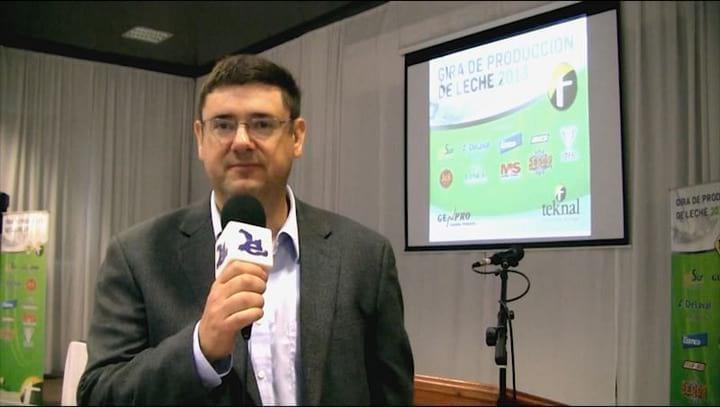Physical outline of the bovine genome revealed by Alberta University researchers
Published: August 23, 2007
Source : University of Alberta Express News
Stephen Moore, head of the Bovine Genome Program in the Department of Agricultural, Food and Nutritional Science, has led a U of A contingent in helping to complete a biological map that is critical for the sequencing of the bovine genome.
It is hoped this physical map of the bovine genome, recently published in Genome Biology, will serve as a tool to help improve cattle production and health.
"Eventually, we want to use this mapping to identify genes that are important in cattle," said Moore. "By that I mean genes that affect health in animals such as resistance to diseases and things that affect the efficiency of the production system and product quality or specification."
This means identifying the genes that affect attributes such as fat profile in dairy milk or meat, and increasing the good fats or decreasing the bad fats.
"We can actually find genes that affect the ratios of good and bad fats," said Moore, explaining that this information will lead to a more healthy meat and milk products and more efficient production system. "There are limitless possibilities."
"We have been working a long time on a trait called residual feed intake, a measurement on how efficiently an animal grows," said Moore.
"Two animals may eat different amounts but grow at the same rate. They can be identical in every other way except the amount they eat. One will be a wasteful animal and eat more than it should, and one will be an economical animal and eat less than maybe what we predicted it would eat. This is important because the cost of feed for animals is being pushed up by things like ethanol production and other alternate uses of what we feed animals."
The bovine genome, expected to be completed in the near future, could even lead to a lessening of the environment hoof print of the cattle industry.
"We already know that efficient animals produce as much as 25 per cent less methane gas than inefficient animals," said Moore. "Methane contributes something like 20 times more greenhouse gas than CO2 does."
After that, Moore said researchers will want to know about the relationship between those traits and characteristics such as tenderness and fatness.
"We are basically trying to find mutations or allelic variance in a particular animal that cause it to be an inferior or superior animal to the average," he said. "What we want to do is eliminate the inferior through breeding and identify the superior animals and make sure they're representative in the breeding population."
"And none of that is possible without first doing the bovine genetic mapping."
The final version of the map consists of 422,000 end sequences, 291,000 digests and 17,000 markers.
While the U of A scientists were instrumental in many areas of this genome mapping, one major contribution came in the form of the Bacterial Artificial Chromosome or BAC map.
The BAC library contains random segments of genomic DNA placed inside bacterial cells and propagated. These acted as the resource for the majority of the subsequent work, which included mapping the genome in four different ways.
Source
University of Alberta Express NewsRelated topics:
Recommend
Comment
Share

Would you like to discuss another topic? Create a new post to engage with experts in the community.




